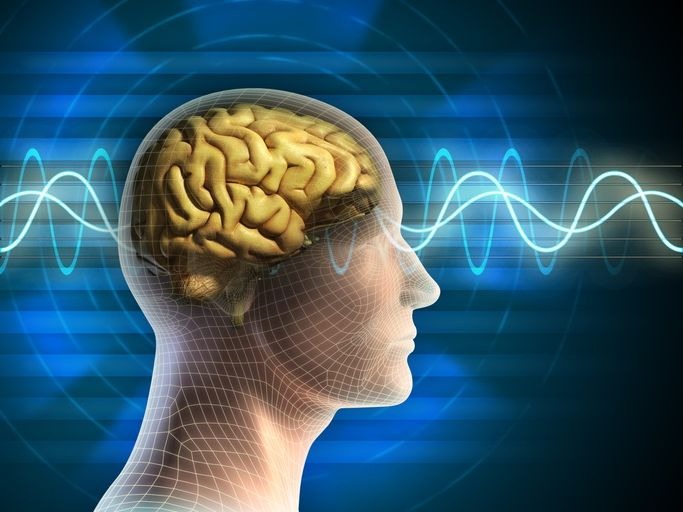How does breathing synchronize brain waves?
Caution : You must consult your doctor for your health. This page presents only a personal and alternative point of view which should not be considered as an attempt to prescribe medicine.
Between the breath and the brain, there is a very important interaction.
In fact, breathing acts on human brain activity.
That said, breathing influences cognitive abilities as well as self-awareness.

Do you want to know more about the close connection between breathing and the brain?
Then check out this article how breathing synchronizes brain waves.
What is the mechanism of respiration?
To better understand the question of the synchronization of brain waves through respiration, it would be useful to know how it works.
In reality, breathing remains a special and self-regulated function, that is to say that we breathe without having to think about it.
However, breathing remains one of the easiest functions to control, which allows us to influence the brain and many other functions of the body.
As for the mechanism itself, the lungs inflate and deflate several times per minute during normal breathing.
Thus, the pulmonary ducts called "pulmonary alveoli" promote the passage of oxygen in the blood, then release it from carbon dioxide.
This mechanism is notably harmonized by certain muscles, but much more by the diaphragm which acts as pumps for the lungs.
All these muscles are in fact directed, either by an independent nervous system located in the brainstem, or by regions of the upper cortex.
In this sense, the brain therefore plays a regulatory role, based in particular on information from the body.
It should therefore be emphasized that the interference between respiration and the brain is bilateral.
In other words, if you change your breath, you impact your brain.
But if you "change" your thoughts, you are impacting your breath.
In fact, when the breath is disturbed in one way or another, by stress for example, the brain feels the damage and also suffers.
At the same time, certain breathing exercises (yoga, meditation, etc.) take advantage of this interdependence.
What concrete interactions exist between breathing and the brain?
There are many regions of the brain whose activity depends on the respiratory rate.
As an illustration, research clearly shows that it is much easier to remember during inhalation than during exhalation.
Indeed, breathing plays a preponderant role in self-knowledge, especially since it participates in the gathering of internal and external information.
Consequently, the psyche is strongly affected when breathing is disturbed, and vice versa.
Bad breathing can therefore have harmful consequences such as irritability, stress, frustration, etc.
Conversely, healthy breathing will be a source of internal and external well-being.
What are the benefits of breathing on brain activity?
As with the human body in general, the positive effects of breathing on the brain are numerous.
Punctual breathing exercises give rise to neuroplasticity mechanisms within the brain.
Neuroplasticity corresponds to the brain's potential to renew itself during life.
Likewise, slow, deep breathing mobilizes the parasympathetic nervous system.
Its action not only affects the heartbeat, but also the emotional areas of the brain (limbic brain), which provides a rather relaxing effect.
In addition to relieving stress, breathing synchronizes the activity of many areas of the brain.
It thus ensures the effectiveness of several cognitive fluctuations.
With each inspiration, for example, theta waves (high frequency waves) are produced in the amygdala and the hippocampus.
These two compartments correspond in particular to the cerebral centers of emotions and memory.
However, breathing would act on the brain through the sensory endings that cover the nasal cavity, hence the importance of having nasal breathing.
Nerve activity spreads to the olfactory cortex and bulb, then reaches the deep regions of the brain (tonsil and hippocampus).
The respiratory tract is therefore the one that orchestrates spatio-temporal sensitivity through the brain.
Put more simply, respiration is connected directly to our brain and more specifically to the animal reptilian brain and the limbic emotional brain.
Meditation: a tool for generating waves?
There are several types of breathing exercises you can do to help synchronize your brain waves better.
Many of them mainly recommend abdominal or ventral breathing (contraction of the diaphragm).
Indeed, this exercise requires more brain resources and makes it possible to generate alpha waves, those produced during meditation.
In addition, abdominal breathing helps to release negative waves / energies like stress and its corollaries.
Meditation is therefore obviously an excellent breathing exercise.
It helps to modify many areas of the brain, and even their volume.
Having slow, controlled and regular breaths like the one in meditation improves the heartbeat, and therefore calms the brain.
In summary, breathing synchronizes brain waves through the interaction between breath and the brain.
How to get on alpha, beta, delta, theta waves
Alpha waves correspond to a state of deep relaxation, a state of well-being and lightness.
We are as if in a meditative state, but awake, a state fully conscious and present at the moment.
To get into alpha waves, a few diaphragmatic breaths and a 10-minute meditation will be more than enough.
Beta waves correspond to a state of wakefulness and concentration.
To get on beta, all you need to do is get active and focus on your activities.
Delta waves correspond to a very deep state of relaxation, where all notions of time and space completely disappear.
And then we have theta waves where the body is stationary, but the mind is very sharp.
These alpha, beta, delta, theta waves are just different brain frequencies that correspond to different states of consciousness.
To get into one or the other, it will in all cases go through the practice of mindfulness meditation.
❤ The ultimate guide to breathing
Intermittent Breathing : Discover the method to quickly relieve your anxiety and chronic fatigue (positive effects from the first use).Read also :
Previous article : How does breathing keep blood pH constant?
Next article : How to breathe better during pregnancy?

